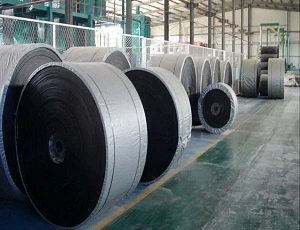Tel: +86-532-84673097
Mobile & Whatsapp & Wechat:+86-13589340409
Mobile & Whatsapp & Wechat:+86-13589340409
Steel cord conveyor belts have become indispensable in conveying materials in scenarios requiring high strength, long distances, and substantial throughput. Their versatile applications extend across various industries, including coal, mining, ports, metallurgy, power, and chemical sectors.

One of the defining characteristics of china steel cord conveyor belt is the exceptional tensile strength. Designed to handle the transportation of materials across large spans and extended distances, these belts exhibit unparalleled strength. This quality makes them particularly suitable for scenarios where a single machine needs to convey materials over considerable distances.
In addition to their high tensile strength, steel cord conveyor belts boast minimal elongation. The required stretching during operation is significantly reduced, ensuring a more efficient and precise conveying process. This attribute not only contributes to the longevity of the belt but also enhances the overall operational efficiency of the system.
The structure of steel cord conveyor belts, featuring a core composed of longitudinally arranged steel cords, offers resistance to bending fatigue. This unique design allows for the utilization of smaller-diameter drive rollers, resulting in a more compact equipment configuration. The smaller drive rollers contribute to the overall efficiency of the conveyor system without compromising on performance.
The bonding between rubber and steel cords is a critical factor in the performance of steel cord conveyor belts. The surface of the steel cords is galvanized, enhancing their durability. Furthermore, the belts use rubber materials with excellent adhesive properties to ensure a robust bond between the rubber and steel cords. This strong adhesion not only withstands impact and prevents chunking but also extends the overall lifespan of the conveyor belt.
Precision in manufacturing processes ensures that the steel cords in the conveyor belt are evenly arranged, resulting in uniform tension. This characteristic contributes to balanced operation, reducing the likelihood of the belt deviating from its intended path. The even distribution of tension enhances the overall stability and reliability of the conveyor system.
The absence of a transverse framework in the core allows steel cord conveyor belts to form deep troughs easily. This advantageous feature facilitates the effective containment of materials, preventing spillage during transportation. The superior troughing performance ensures that materials are securely carried along the conveyor, contributing to a cleaner and more efficient operation.
In critical applications where safety is paramount, the steel cord skeleton in these conveyor belts allows for X-ray inspection. This capability enables thorough examination and detection of potential issues, preventing accidents and ensuring the continued safe operation of the conveyor system.
In conclusion, the characteristics of steel cord conveyor belts make them a preferred choice for demanding industrial applications. Their strength, efficiency, and adaptability contribute to seamless material handling across various sectors, establishing them as a crucial component in modern conveyor technology.